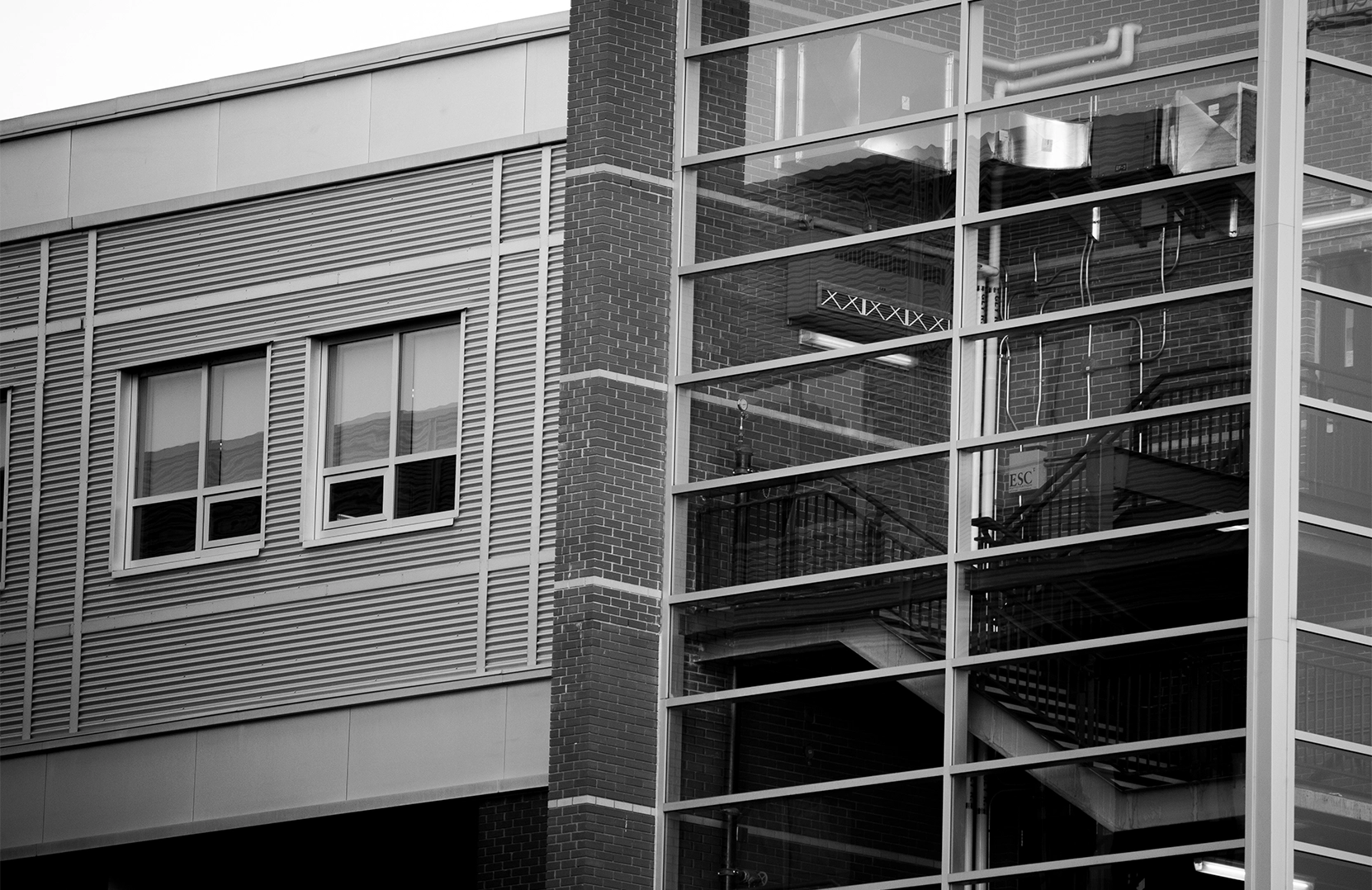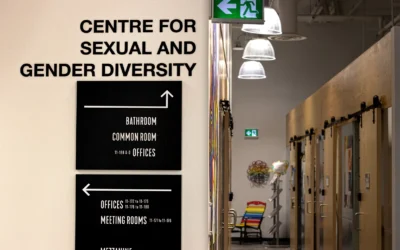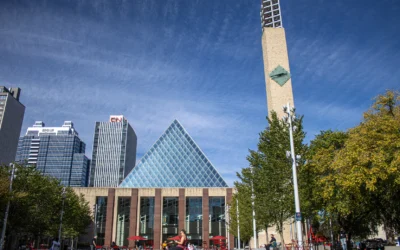In 2021, construction began for the Valley Line West LRT, a project intended to make more areas of Edmonton accessible by public transportation. However, until the project is completed, the construction around Edmonton is having the exact opposite effect, especially along 104 Ave., right in front of MacEwan University.
“It is really bad right now,” says John Jonson, a communications student at MacEwan.
Three years into the construction, the roads and sidewalks around MacEwan have been blocked off and moved into different configurations that are constantly changing, making it difficult for students to navigate to and from the school.
“It’s absolutely horrible because you’re trying to get into the parking lot, and there’s just different lanes, and it’s very confusing,” says Ekam Sidhu, another MacEwan student.
While the constant roadwork has made it difficult for students who drive to school, it seems to be even more challenging for students who rely on public transportation, particularly those with different mobility needs.
Pari Sekhon, a MacEwan student who relies on using a cane, can attest.
“There’s no path for them to go, and they’re obviously having a hard time getting to class,” says Sekhon.
In the 2023-2024 year, MacEwan reported that 1,995 students had advising meetings with Access and Disability Resources (ADR), as well as a 5 per cent increase of students with a confirmed disability and a 4 per cent increase in students with multiple disabilities. These numbers represent students with a wide range of disabilities, including those that require the use of mobility aids.
On their website, Marigold Infrastructure Partners (who is heading the project) states that “safety is their number one priority” and that they “aim to do all we can to make sure that temporary measures for traffic, pedestrians, cyclists, and individuals with mobility issues are front of mind.”
Students have noticed that while these temporary measures are in place, their execution could be greatly improved in some areas, mainly when it comes to curbs and wheelchair ramps.
“I have to fight for my life to get up on the curb,” says Sekhon.
Temporary ramps have been placed in some of these locations, but students are saying they are causing problems.
“I’ve noticed [the temporary ramps] can be pretty unreliable as they were not properly bolted in or whatever, like sliding around,” said Jade Charlery-Vidmar, a MacEwan student who uses a wheelchair.
The other area that students have found to be lacking is proper signage.
“If they’re going to block off areas, at least make it so that accessible places are visible so that you can know where they are, you can go find it,” says Sekhon. “So many people are confused about where to go.”
Many times, the signs saying that sidewalks are closed are not visible until you get to the closed sidewalk, making it so that people have to backtrack in order to find an accessible route.
“There are a few maps that are posted around, which I feel like, could be distributed more rather than just maps pasted on random light posts,” said Charlery-Vidmar. “I think it could be done better.”
What seems to be the biggest challenge these students face is actual access to public transportation during the construction. Bus stops have had to be blocked off, with small makeshift stops taking their place in order to accommodate the ever-changing road work.
“It took me 20 minutes to find my bus stop one time because it was just gone,” said Sekhon.
“I, on several occasions, missed the bus trying to get to those make-shift bus stops because it’s like twisting and turning to get through that,” said Charlery-Vidmar.
Construction for the Valley Line West LRT is set to be completed in 2028, and even though that still seems like an eternity, there may be some hope. New technologies are in the works to help people with mobility issues plan out accessible routes within buildings as well as city streets.
Click and Push Accessibility at the University of Alberta is currently working on an app called Atlas, which, when completed, will allow people with mobility aids to access maps that will help its users navigate from point A to point B, while being able to see all of the barriers that they might run into.
Currently, Click and Push has focused on mapping out buildings at the University of Alberta for their app, but they have plans to expand it to encompass the City of Edmonton, which would include accessibility maps to help people navigate around construction sites.
As a quadriplegic who relies on a wheelchair, Arne Andres, a representative from Click and Push, has to be strategic when it comes to his daily commute and there are areas of the city that he will not travel to, MacEwan being one.
“I’m sure MacEwan would be terrible,” said Andres. “I dare not go there because I’m sure it’s not accessible.”
However, while the project will be an invaluable tool upon its completion, the project is facing difficulties in expanding its reach, especially when it comes to the City of Edmonton.
“We’ve been talking to the City of Edmonton for how many years? And it’s not happening,” said Andres. “It’s just too many people to talk to.”
While students wait for technologies like the Atlas app, they must find their own strategies and ways of dealing with the construction.
Charlery-Vidmar has found that sometimes alternate routes are needed to make the school as accessible as possible for them.
“I go to MacEwan station sometimes instead. That’s usually in the winter when it’s really cold, and I don’t want to make my way all the way from Corona station, and that does prove to be helpful,” said Charlery-Vidmar. “But the issue with that usually is that it’s an extra 15 minutes because I have to transfer and wait for the next train to show up.”
Sekhon is still trying to figure out the best plan of attack, and for right now takes her commute day by day.
“I just have to hope and pray that the area I’m going to isn’t blocked off and that the elevator in that area is working.”
Still, even though the construction is posing issues when it comes to accessibility, for now, navigating around campus isn’t impossible. Charlery-Vidmar says the construction is passable, though they have their concerns about what will happen when they finish the construction.
“What concerns me is limiting crosswalks,” said Charlery-Vidmar. Her fear is that even when construction is complete, there will still be limited access to the university for people with disabilities.
Until the eventual completion of the project, the roads and bus stops in front of MacEwan will continue to change, move and become blocked off, and students will continue to find their own ways of navigating to and from campus and hope that things start to improve.
Students with questions relating to access and disabilities can contact Access and Disability Resources at myaccess@macewan.ca.
The Griff reached out to the City of Edmonton as well as the Alberta Construction Association for comment and did not receive a response in time for publication.
Photo by Amanda Erickson





0 Comments